Orangeblood Review: A Future-90s Hip Hop RPG
by January 13, 2020 @ 8:45 am
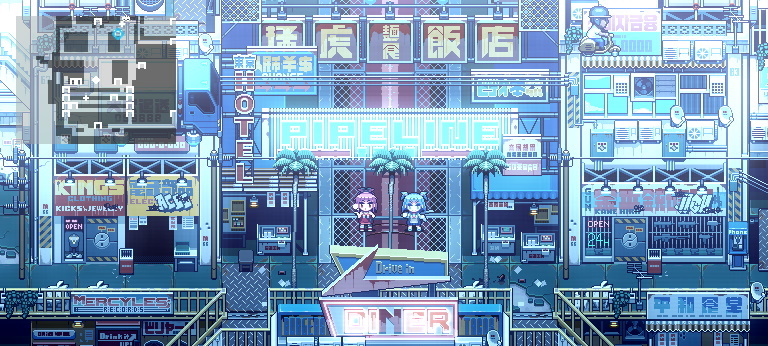
Reviewed on PC
The ’80s have seen a resurgence the past few years with TV shows and movies taking place in the iconic decade, and some even creating alternate versions of it. But what about the ’90s? Those were great times, man! Orangeblood from developer Grayfax Software celebrates 1990s hip hop culture while taking you to an alternate reality set in Okinawa. The game is a throwback to classic pixel RPGs, but its music, themes, and characters are all very much rooted in ’90s culture. What you ultimately get is a fun, challenging RPG that’s really, really stylish and loaded with great music.
The Year Is 199… X! Aw, yeah!
The future is here! Orangeblood is set in the year 199X. Like an actual game released in the ’90s, the setting is very much a gritty, cyberpunk future. There are robots, flying cars, and nightclubs. Because the game takes place in Okinawa, you’ll visit a lot of areas that borrow from Asian culture, with cool little eateries and shops bunched together.
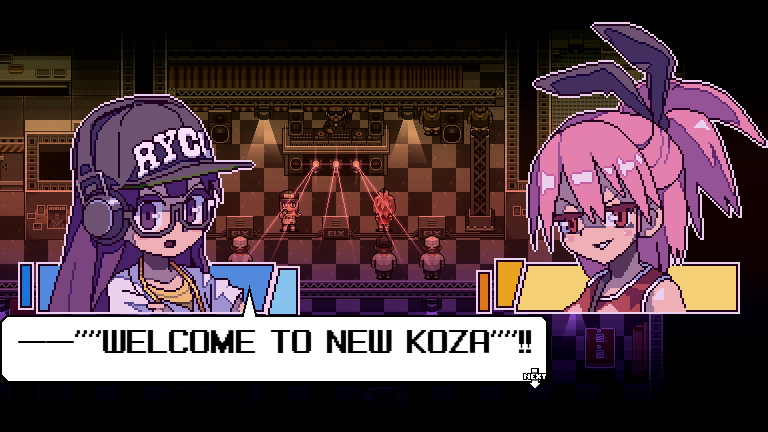
The story of Orangeblood isn’t too strong, but the character dialogue is certainly solid. The game’s characters speak pretty much like you’d expect hardcore hip hop fans to. From the protagonists to the mob bosses, you’re treated to some entertaining slang and even a little foul language. Orangeblood is definitely a game with attitude, and it’s not afraid to revel in that attitude.
Epic Heroes Need Not Apply
The heroines of Orangeblood aren’t your typical knights and mages. Hell, they’re not even your atypical heroes — you know, like a kid wielding a baseball bat and yo-yo. These ladies are rappers and DJs, and they’re armed with assault rifles, shotguns, bulletproof vests, and rad kicks (which both look cool and give special buffs). I mean, how else are they going to take down bad yakuza mobsters and mini tanks?
As you explore the map, you’ll take on story missions and optional objectives. These appear in your menu, though it’s tricky to differentiate what you have to do to move the story along. If you’re going to do everything there is to do, this shouldn’t be a problem, but if you’re only planning on sticking to the story, you may find the ambiguity of the missions a bit tedious. Thankfully, both optional and story missions are fun, and the world of Orangeblood is a joy to explore, so it’s highly recommended to do most of the missions, mandatory or otherwise.
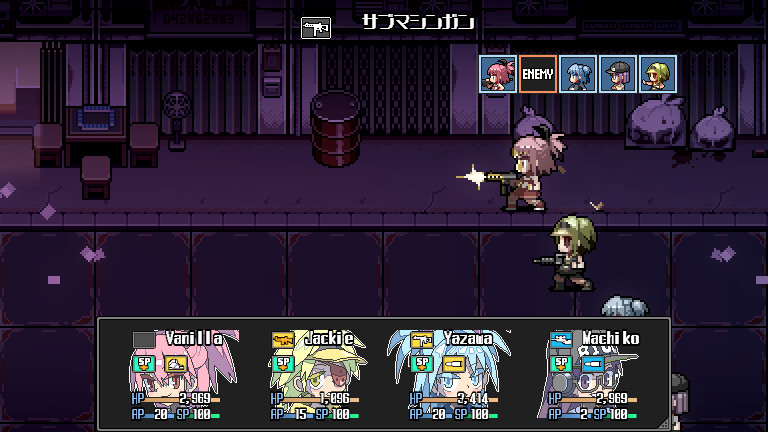
There are a lot of sights to see and explore in the game’s version of Okinawa. You’ll be able to visit plenty of shops that sell useful items and weapons, as well as restaurants that sell hearty, healing meals. Discovering underground lairs and exploring every nook in the game’s dungeons is great fun.
Moving around the map can sometimes be a little cumbersome, even if it is a part of what makes Orangeblood so entertaining. The problem is that the controls and character movements aren’t always smooth. You’ll be walking around a multi-story structure, and trying to enter a tight passage or align just perfectly with a staircase isn’t always the easiest thing to do. Fortunately, this is a minor hindrance and nothing that ever made me want to stop playing.
The combat is where it’s really at, though. While Orangeblood takes cues from classics like Final Fantasy and EarthBound, the game prides itself on putting its own spin on its influences. Your main attacks consist of shooting bad dudes and evil robots. You can also perform special attacks like charged shots and powerful shots that hit targets at random. You also have status upgrades at your disposal, with characters either powering you up or removing buffs from enemies. These moves all use the game’s version of mana, and they make for a simple yet lightly strategic action experience.
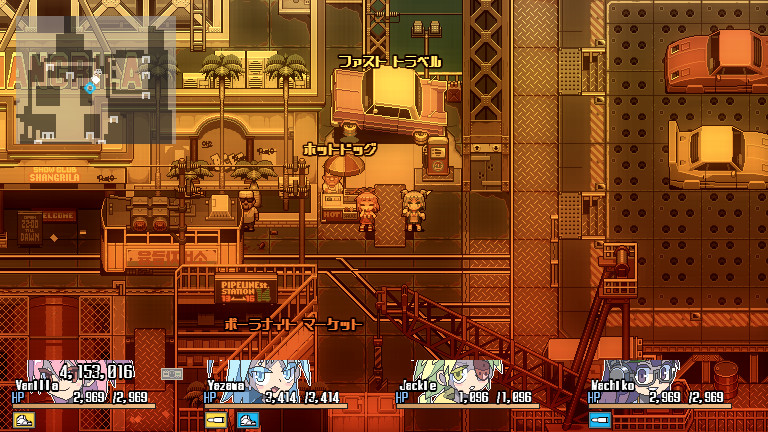
If you’ve played your share of RPGs in the past, the systems in place in Orangeblood will be instantly familiar. Yes, the game does things a little differently and features a more “thug life” coat of paint, but it doesn’t stray too far from the formulas you’ve come to know and love from these types of games. Also, “thug life” is actually something the characters in the game say after battles, which is weirdly awesome.
Sun-Drenched Pixels, Neon Nights, and Heavy Beats
The art of Orangeblood is one of its strongest elements, which is really saying something considering how well-made the entire game is. There are bright orange and yellow beaches. You’ll see glossy, neon nightlife spots akin to those in Blade Runner. Tech-y dungeons are cold, sterile, and grimy. The various locales all feature great visual designs.
Interestingly, the art isn’t just graphics-based. A lot of the areas look lived in or busy, with points of interest including high-rise buildings and plazas, and crowded areas filled with NPCs roaming around their favorite shops.
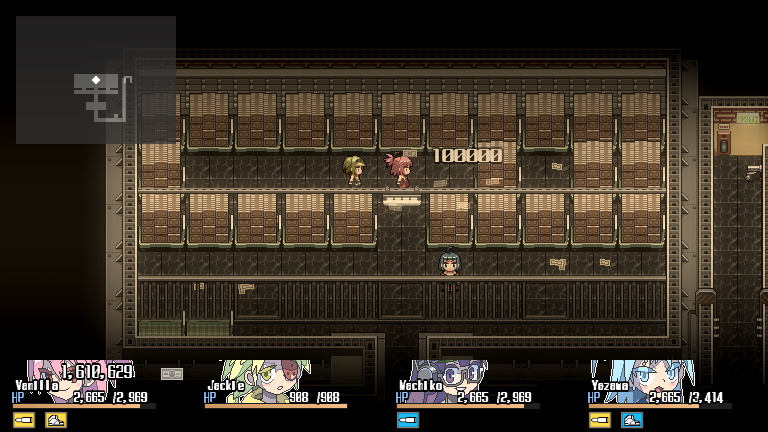
The presentation extends to the sound design of Orangeblood, too. The game is bursting with original hip hop tunes that add to the game’s flair and attitude. These themes are super catchy, and although you’ll hear a lot of the same songs for extended periods as you explore the game world, it’s impossible to get tired of them. They’re just that good. This ain’t no mumble rap, either — the hip hop tracks offered here all sound like solid underground beats from the ’90s.
The stylized pixel art and kick-ass soundtrack combine with the tough turn-based gameplay to create an experience that’s largely satisfying. You’ve probably played similar RPGs, but given how solid the action is, and thanks to the endless amounts of style and personality infused in the art and sound, there’s a lot to dig about this particular title. Some of the mechanics aren’t perfect, and the movement can be a minuscule issue from time to time, but these problems don’t outweigh the good. Orangeblood is an absolutely thrilling ride through a bizarre neo-noir land.
Score: 8 out of 10
Follow this author on Twitter.